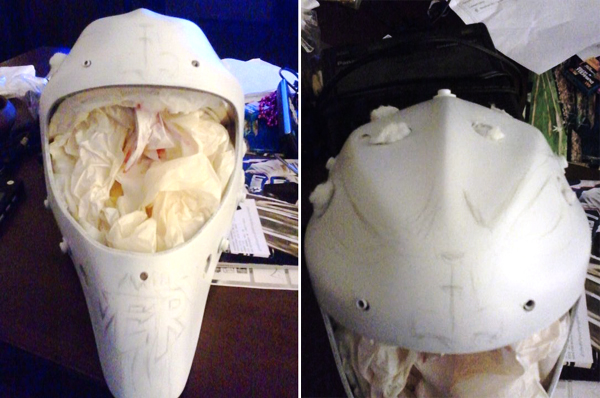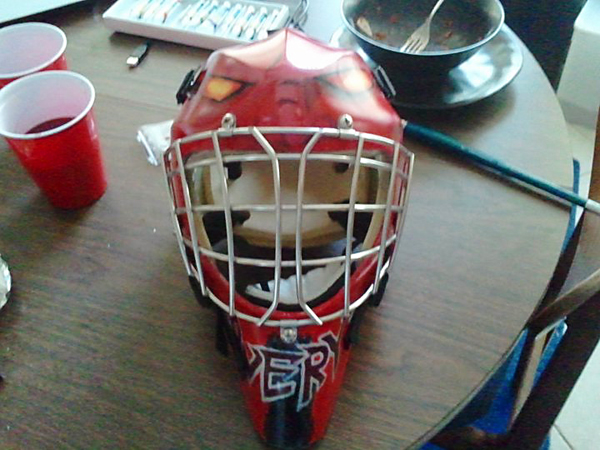
Susan Rothenberg, Three Masks, 2006. Oil on canvas, overall: 59 3/16 in x 66 1/8 in. The Phillips Collection, Washington, D.C. The Dreier Fund for Acquisitions, 2007.
Currently on display in the Sant Building, Susan Rothenberg’s Three Masks (2006) depicts three theatrical masks, one held by a pair of disembodied mannequin-esque arms rising from a field of white. Masks have been a popular subject not only for Rothenberg but for a number of artists. Recently, I was tasked with painting my cousin’s pee-wee ice hockey league goalie mask. Here are the steps I took:
- Disassemble the mask, removing the cage and all hardware.
- Sand the entire surface of the mask using 200, 400, and 600 grit sandpaper. Fill in any imperfections with body filler.
- Apply masking tape to the padding, and insert cotton balls into the vent holes to keep the mask’s interior padding intact.
- Spray filler primer onto the mask evenly.
- Pencil in the design, and apply paint. In this instance, I chose acrylic paint for its non-reactive properties with the fiberglass of the mask.

- Apply clearcoat, polish with polishing compound, and reassemble.






